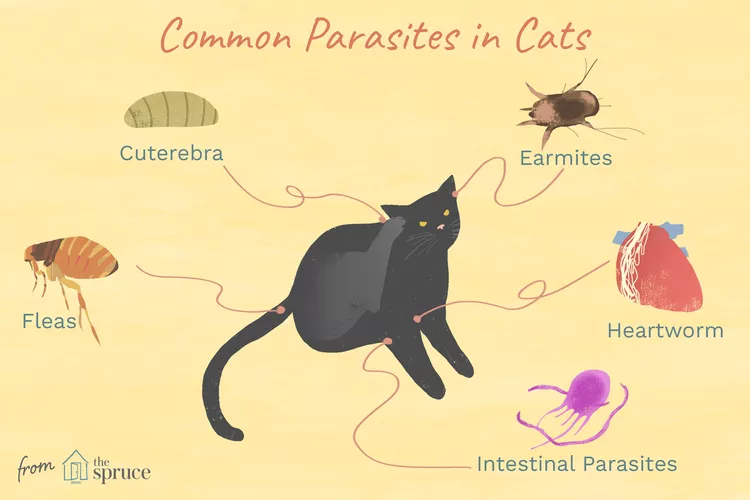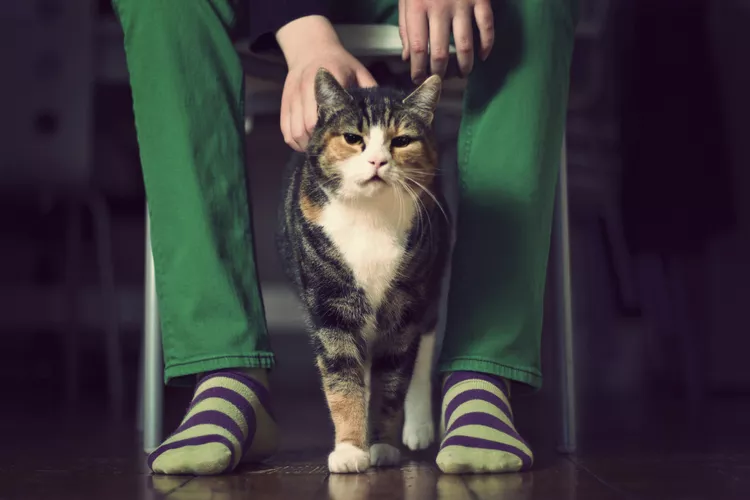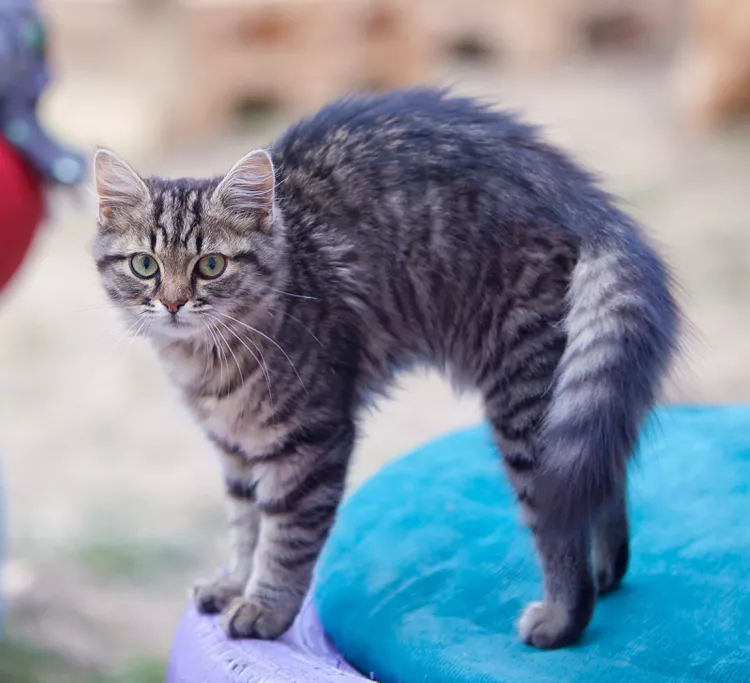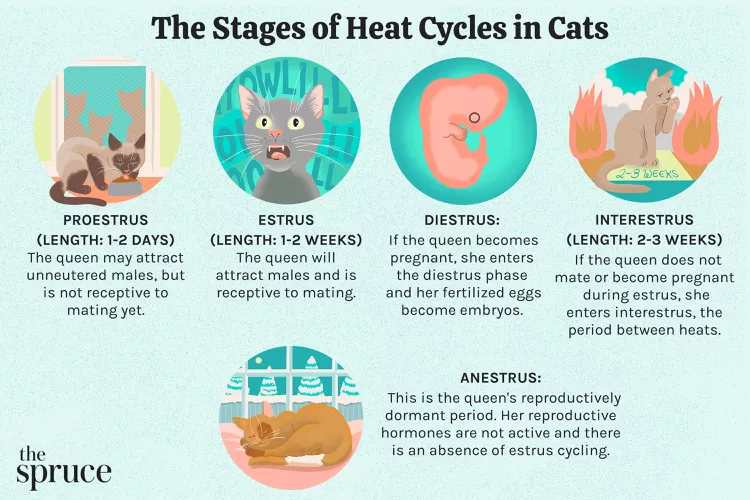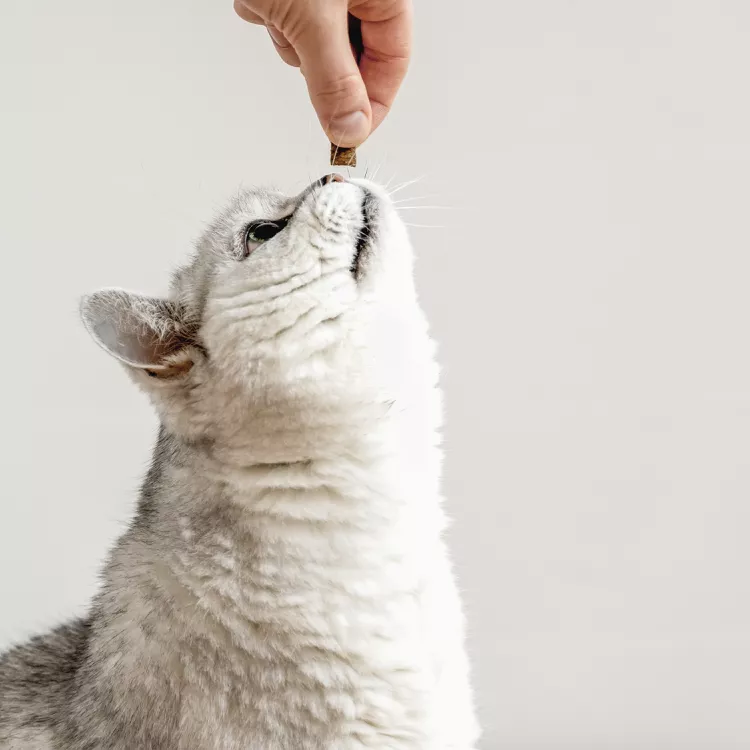- 01 of 06
Mites
Mites are tiny arachnids, but they don't look like a spider. These external parasites are typically unable to be seen without the use of a microscope and can infect different parts of a cat. Preventative medications can be used to help keep a cat from getting mites, but they usually need to be administered monthly. The types of mites seen on cats include:
- Demodex: Also referred to as demodectic mites and demodectic mange, Demodex is a genus of mites that lives on or in the skin of cats, and infection of these mites is called demodecosis. Two different species of Demodex can be found on cats: Demodex cati and Demodex gatoi. Normally there are very small amounts of these mites on a healthy cat, but if a cat is immunosuppressed, they may overpopulate and cause itching, hair loss, skin inflammation, and crusting. Diagnosis of these mites typically requires scraping of the skin and analysis under a microscope. Treatment involves topical and/or injectable medications to kill the mites and treat the symptoms of the infection.
- Walking Dandruff: Known technically as Cheyletiella mites, an infection of these mites is called cheyletiellosis. They get their name from the way they look and the scaling they cause to the skin. They may be able to be seen moving around on a cat without a microscope or otoscope but are very tiny. They cause itching as well as skin scaling but are easily treated with topical medications.
- Scabies: Also called notoedric mange, scabies mites burrow into the skin of cats. The specific mite that causes scabies in cats is Notoedres cati, and it is very closely related to the sarcoptic mange that dogs get. It is very rare but causes itching, crusting, and scaling of the skin. It is usually treated with topical medications.
- Ear Mites: Very commonly seen in cat ears, Otodectes cynotis are mites that cause the typical itching that other mites also cause. They are usually treated with topical medications and are very contagious to other cats.
- 02 of 06
Fleas
Fleas are not uncommon external parasites on dogs and cats, but because cats are such fastidious groomers, they may not be as obvious to a pet owner as they would be on other animals. Fleas can infest an environment quite easily. They take blood meals from cats and reproduce rapidly making it difficult to eradicate them from some homes. Sprays and powders for your home along with topical medications for your pet are used to treat a flea infestation. Preventative medications can be easily administered to prevent them from causing a problem in the first place.
The cat flea, Ctenocephalides felis, can also transmit serious diseases and parasites in addition to the itching and hair loss that pet owners see. Because of this, preventing fleas is more than just preventing a nuisance. Less commonly, cats can also be infested with the dog flea, Ctenocephalides canis, which can also transmit parasites to a cat.
- 03 of 06
Intestinal Parasites
Intestinal parasites are internal parasites that can be worms, eggs, or protozoans. These tiny parasites live inside the stomach and intestinal tract of cats. Only the worms are visible to the naked eye. To detect them, stool samples are routinely tested by a veterinarian and various medications will be utilized to treat intestinal parasite infections.
- Giardia: This microscopic protozoan is also a problem for humans and attaches itself to the wall of the intestines of cats. It causes diarrhea and is passed to animals and people in contaminated soil and water.
- Coccidia: Another microscopic parasite, this parasite also causes diarrhea in cats. Several different types of intestinal coccidia can infect cats including Isospora felis, Isospora rivolta, Sarcocystis, and Toxoplasma gondii (which humans can also contract).
- Whipworms: This intestinal parasite has a larval or worm stage that is often seen by cat owners, but the eggs can be noticed microscopically. Trichuris vulpis, the technical name for whipworms, causes diarrhea.
- Hookworms: Another intestinal parasite that has both a worm stage and microscopic eggs, hookworms also cause diarrhea and other gastrointestinal symptoms in cats. The most common types of hookworms seen in cats are Ancylostoma tubaeforme and Ancylostoma braziliense.
- Roundworms: A very common type of intestinal parasite, roundworms are usually described as spaghetti-looking worms in the stool of cats. They also have a microscopic egg stage. These worms often cause a bloated or round belly appearance in cats along with loose stools and occasionally even vomiting.
- Tapeworms: If a cat consumes a flea, they may get tapeworms. The worms of this intestinal parasite look like pieces of rice in the stool, but there are microscopic eggs as well. This worm is known to cause weight loss.
- 04 of 06
Ticks
Larger than fleas and mites, ticks are external parasites that latch onto a cat to feed off of its blood. Ticks can carry a variety of diseases, but preventative medications can keep them off of a cat. There are several different kinds of ticks that cats can get depending on what part of the country the cat is in. Some common kinds of ticks include:
- Lone Star Tick: This type of tick is only occasionally found on cats. The technical name is Amblyomma americanum, and this tick can spread a potentially lethal blood parasite called Cytauxzoon felis.
- American Dog Tick: Despite the name, this tick can also be found on cats and (on very rare occasions) may cause Rocky Mountain Spotted Fever (RMSF).
- Deer (Blacklegged) Tick: Ixodes species of ticks are often referred to as deer ticks and can infect a cat with anaplasmosis.
Other ticks and tick-borne diseases, including tick paralysis, also exist. Antibiotics are commonly prescribed to treat infections caused by ticks, but using preventative treatments to keep ticks away is the best strategy to prevent illness.
Continue to 5 of 6 below - 05 of 06
Heartworms
Transmitted through mosquito bites, heartworms commonly infect dogs, but cats are also at risk. Dirofilaria immitis, or heartworms as they are more called, are microscopic internal parasites that often go undetected in cats because they have a lower "worm burden." Despite this, heartworms can still cause significant respiratory problems in cats. The same treatment that is used for dogs is not safe for cats, but your vet might recommend doxycycline or another monthly preventative to shorten the lifespan of the worms.
- 06 of 06
Cuterebra
Larvae of the botfly, the Cuterebra genus of flies are also known as warbles in cats. There are several different species of Cutrebra, but they all burrow into the skin and cause swelling. Once the larvae are large enough, the swelling usually breaks open, leaving a hole in the skin.
The larvae can be seen in this hole before emerging, but sometimes the larvae must be surgically removed. The swelling and inflammation usually lead to an abscess that requires medications and cleaning to manage the infection. The skin is the most common location for the larvae to end up, but it's important to note that rare larvae can migrate abnormally and cause problems with an animal's eyes, upper airways, spine, or even brain.
